Abstract
Eleven cases of infection with Bacterium anitratum and one with Mima polymorpha are described. Microscopically the organisms showed Gram-negative or Gram-variable diplococci with a tendency to form filaments. There appear to be a number of biochemical variants of B. anitratum. Serological cross-reactions with the genus Klebsiella was found. The antibiotic patterns are given and particular attention is drawn to the resistance of the organisms to chloramphenicol.
Full text
PDF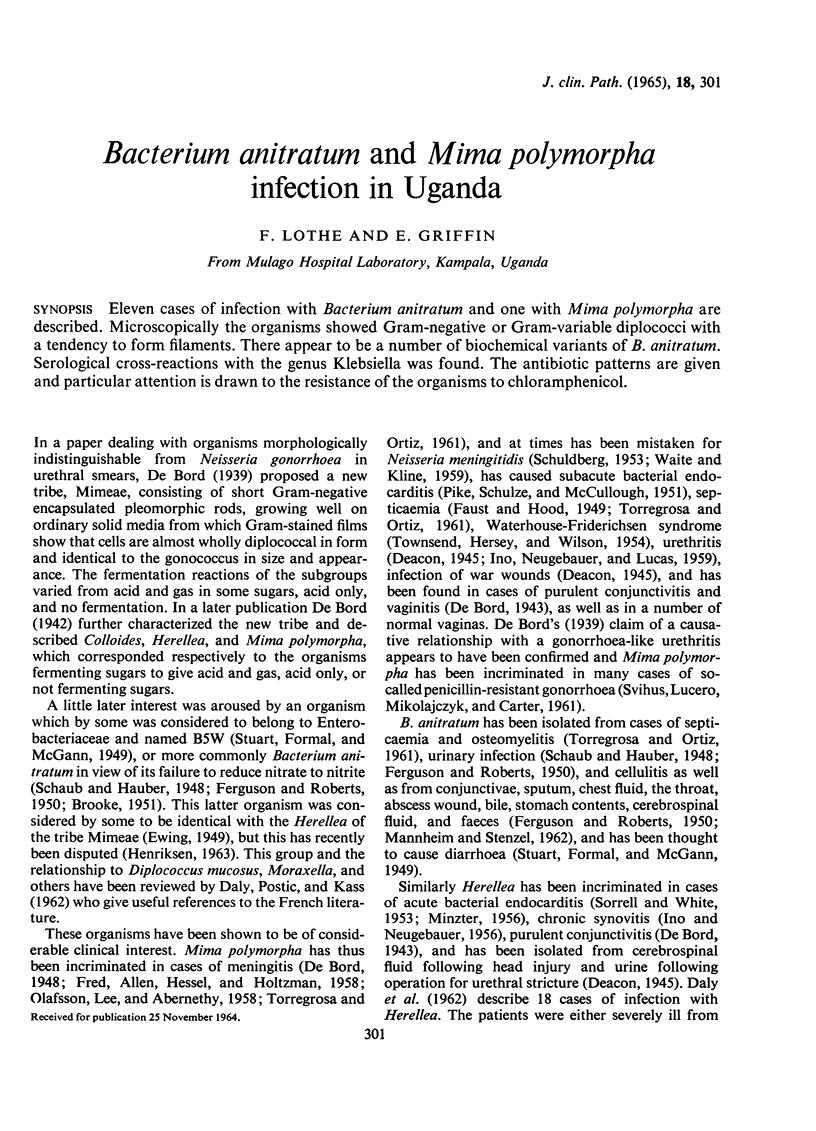
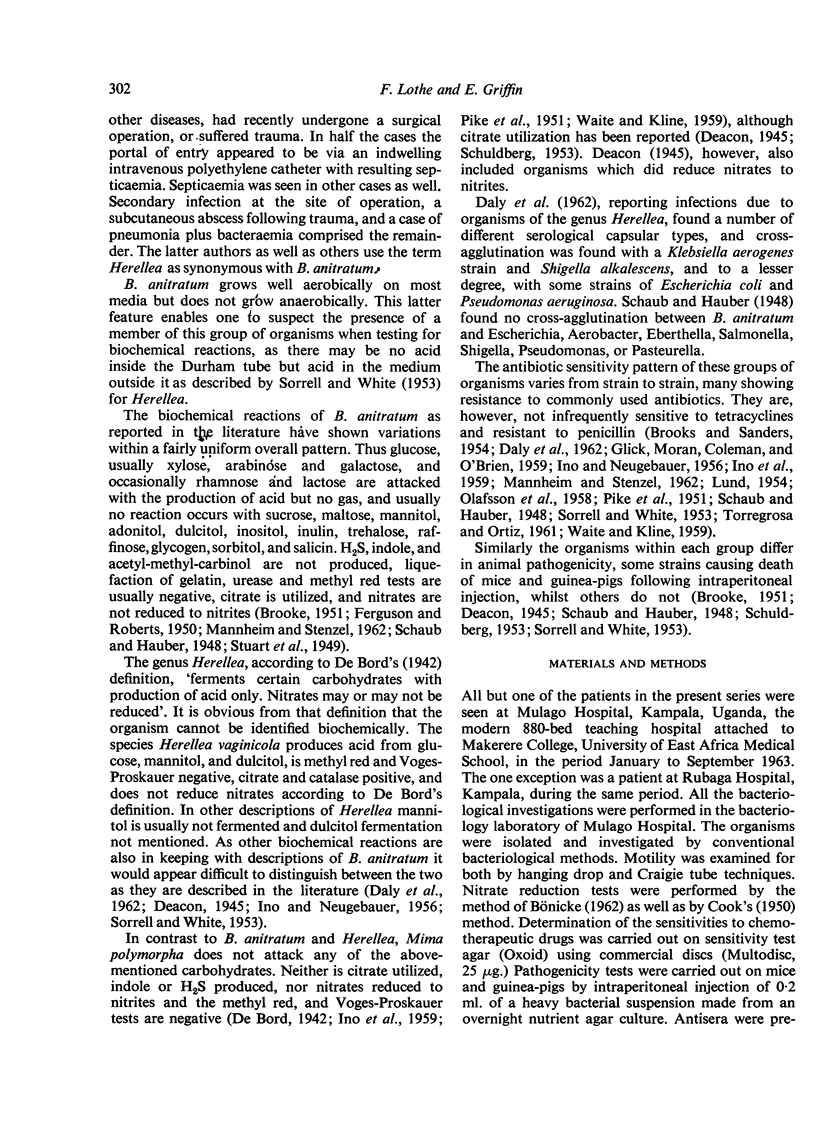
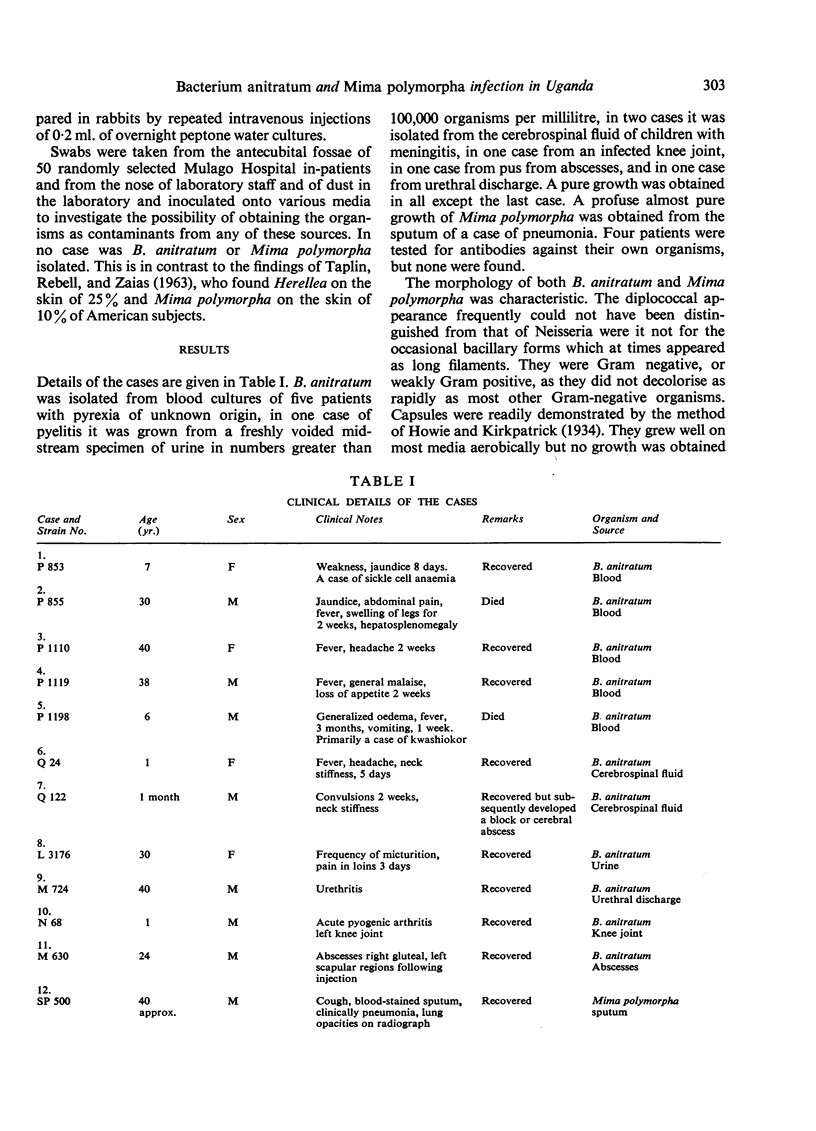

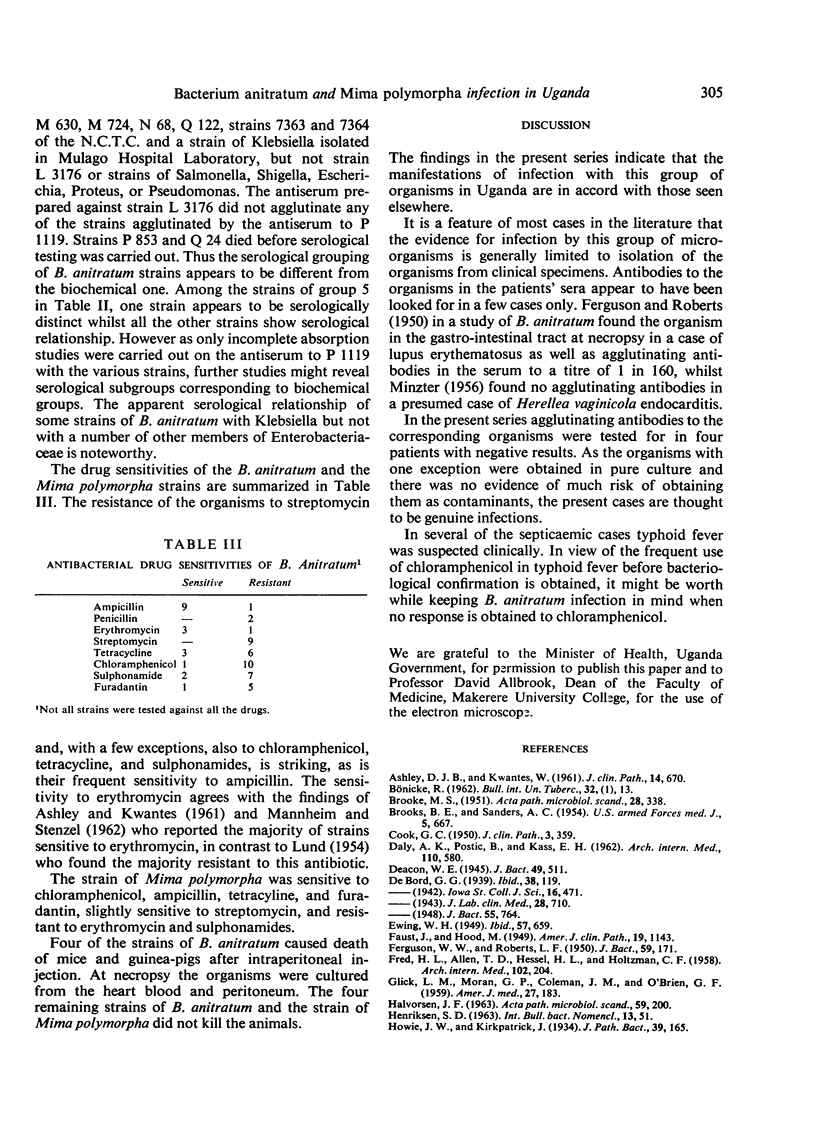
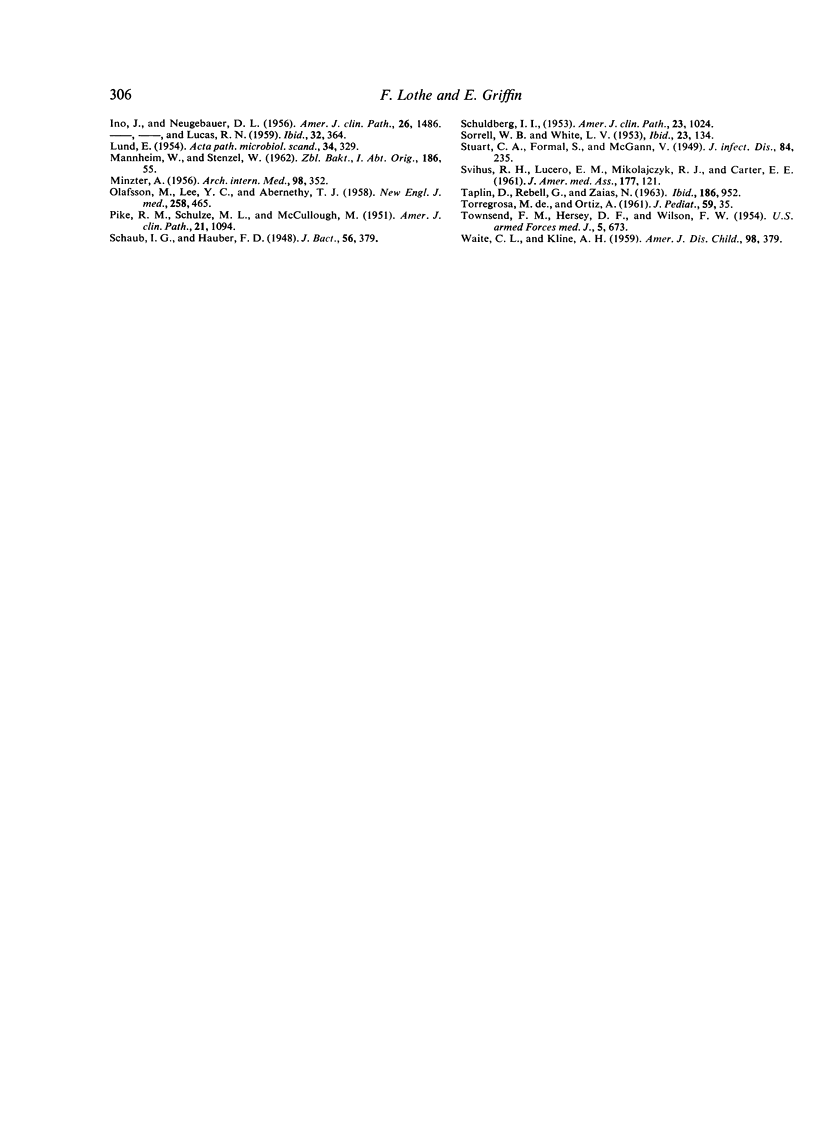
Images in this article
Selected References
These references are in PubMed. This may not be the complete list of references from this article.
- ASHLEY D. J., KWANTES W. Four cases of human infection with Achromobacter anitratus. J Clin Pathol. 1961 Nov;14:670–673. doi: 10.1136/jcp.14.6.670. [DOI] [PMC free article] [PubMed] [Google Scholar]
- BROOKE M. S. The occurrence of B5W (B. anitratum) strains in Denmark. Acta Pathol Microbiol Scand. 1951;28(4):338–342. doi: 10.1111/j.1699-0463.1951.tb03699.x. [DOI] [PubMed] [Google Scholar]
- BROOKS B. E., SANDERS A. C. Unidentified gram-negative rods and the tribe mimeae. U S Armed Forces Med J. 1954 May;5(5):667–672. [PubMed] [Google Scholar]
- Cook G. T. A Plate Test for Nitrate Reduction. J Clin Pathol. 1950 Nov;3(4):359–362. doi: 10.1136/jcp.3.4.359. [DOI] [PMC free article] [PubMed] [Google Scholar]
- DALY A. K., POSTIC B., KASS E. H. Infections due to organisms of the genus Herellea. B5W and B. anitratum. Arch Intern Med. 1962 Nov;110:580–591. doi: 10.1001/archinte.1962.03620230026006. [DOI] [PubMed] [Google Scholar]
- Ewing W. H. THE RELATIONSHIP OF BACTERIUM ANITRATUM AND MEMBERS OF THE TRIBE MIMEAE (DeBORD). J Bacteriol. 1949 Jun;57(6):659–659. doi: 10.1128/jb.57.6.659-659.1949. [DOI] [PMC free article] [PubMed] [Google Scholar]
- FAUST J., HOOD M. Fulminating septicemia caused by Mima polymorpha; report of case. Am J Clin Pathol. 1949 Dec;19(12):1143–1145. doi: 10.1093/ajcp/19.12.1143. [DOI] [PubMed] [Google Scholar]
- FERGUSON W. W., ROBERTS L. F. A bacteriological and serological study of organism B5W (Bacterium antiratum). J Bacteriol. 1950 Feb;59(2):171–183. doi: 10.1128/jb.59.2.171-183.1950. [DOI] [PMC free article] [PubMed] [Google Scholar]
- FRED H. L., ALLEN T. D., HESSEL H. L., HOLTZMAN C. F. Meningitis due to Mima polymorpha. AMA Arch Intern Med. 1958 Aug;102(2):204–206. doi: 10.1001/archinte.1958.00260200032006. [DOI] [PubMed] [Google Scholar]
- GLICK L. M., MORAN G. P., COLEMAN J. M., O'BRIEN G. F. Lobar pneumonia with bacteremia caused by Bacterium anitratum. Am J Med. 1959 Jul;27(1):183–186. doi: 10.1016/0002-9343(59)90074-9. [DOI] [PubMed] [Google Scholar]
- HALVORSEN J. F. GLIDING MOTILITY IN THE ORGANISMS BACTERIUM ANITRATUM (B5W), MORAXELLA LWOFFI AND ALKALIGENES HAEMOLYSANS, AS COMPARED TO MORAXELLA NONLIQUEFACIENS. Acta Pathol Microbiol Scand. 1963;59:200–204. doi: 10.1111/j.1699-0463.1963.tb01789.x. [DOI] [PubMed] [Google Scholar]
- INO J., NEUGEBAUER D. L. Isolation of a species of genus Herrellea from a patient with chronic synovitis. Am J Clin Pathol. 1956 Dec;26(12):1486–1489. doi: 10.1093/ajcp/26.12_ts.1486. [DOI] [PubMed] [Google Scholar]
- LUND E. Sensitivity of Bac. anitratum to 8 antibiotics as determined by means of the tablet method. Acta Pathol Microbiol Scand. 1954;34(4):329–335. doi: 10.1111/j.1699-0463.1954.tb00831.x. [DOI] [PubMed] [Google Scholar]
- MINZTER A. Human infection caused by the Mimeae organisms; report of a case of a presumably healed bacterial endocarditis due to Herellea vaginicola. AMA Arch Intern Med. 1956 Sep;98(3):352–355. doi: 10.1001/archinte.1956.00250270096013. [DOI] [PubMed] [Google Scholar]
- OLAFSSON M., LEE Y. C., ABERNETHY T. J. Mima polymorpha meningitis; report of a case and review of the literature. N Engl J Med. 1958 Mar 6;258(10):465–470. doi: 10.1056/NEJM195803062581002. [DOI] [PubMed] [Google Scholar]
- PIKE R. M., SCHULZE M. L., McCULLOUGH M. Isolation of Mima polymorpha from a patient with subacute bacterial endocarditis. Am J Clin Pathol. 1951 Nov;21(11):1094–1096. doi: 10.1093/ajcp/21.11_ts.1094. [DOI] [PubMed] [Google Scholar]
- SCHULDBERG I. I. Clinical and pathologic simulation of meningococcic meningitis; report of a case with necropsy. Am J Clin Pathol. 1953 Oct;23(10):1024–1027. doi: 10.1093/ajcp/23.10.1024. [DOI] [PubMed] [Google Scholar]
- SORRELL W. B., WHITE L. V. Acute bacterial endocarditis caused by a variant of the genus Herrellea. Am J Clin Pathol. 1952 Feb;23(2):134–138. doi: 10.1093/ajcp/23.2.134. [DOI] [PubMed] [Google Scholar]
- Schaub I. G., Hauber F. D. A Biochemical and Serological Study of a Group of Identical Unidentifiable Gram-negative Bacilli from Human Sources. J Bacteriol. 1948 Oct;56(4):379–385. doi: 10.1128/jb.56.4.379-385.1948. [DOI] [PMC free article] [PubMed] [Google Scholar]
- TAPLIN D., ZAIAS N. THE HUMAN SKIN AS A SOURCE OF MIMA-HERELLEA INFECTIONS. JAMA. 1963 Dec 7;186:952–955. doi: 10.1001/jama.1963.63710100030023a. [DOI] [PubMed] [Google Scholar]
- TOWNSEND F. M., HERSEY D. F., WILSON F. W. Mima polymorpha as a causative agent in Waterhouse-Friderichsen syndrome. U S Armed Forces Med J. 1954 May;5(5):673–679. [PubMed] [Google Scholar]



